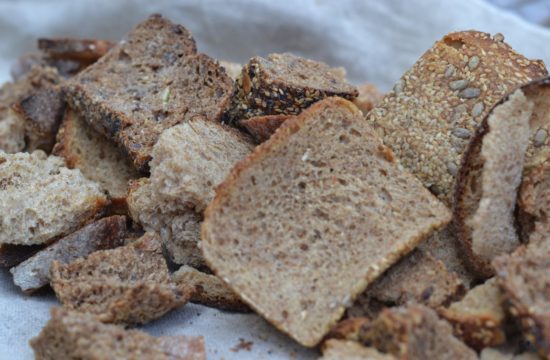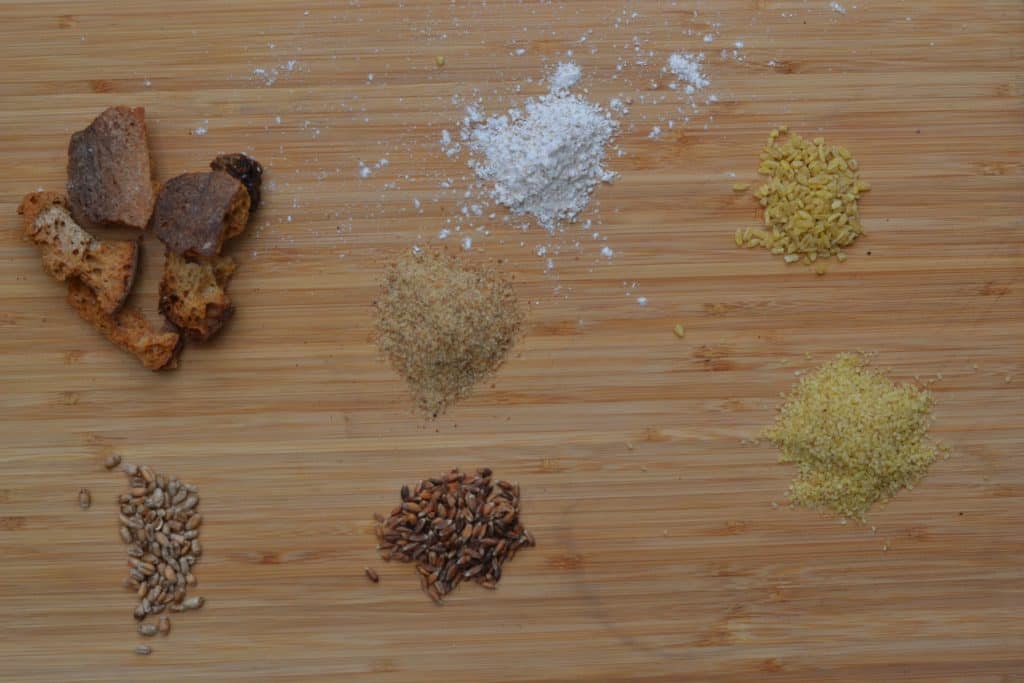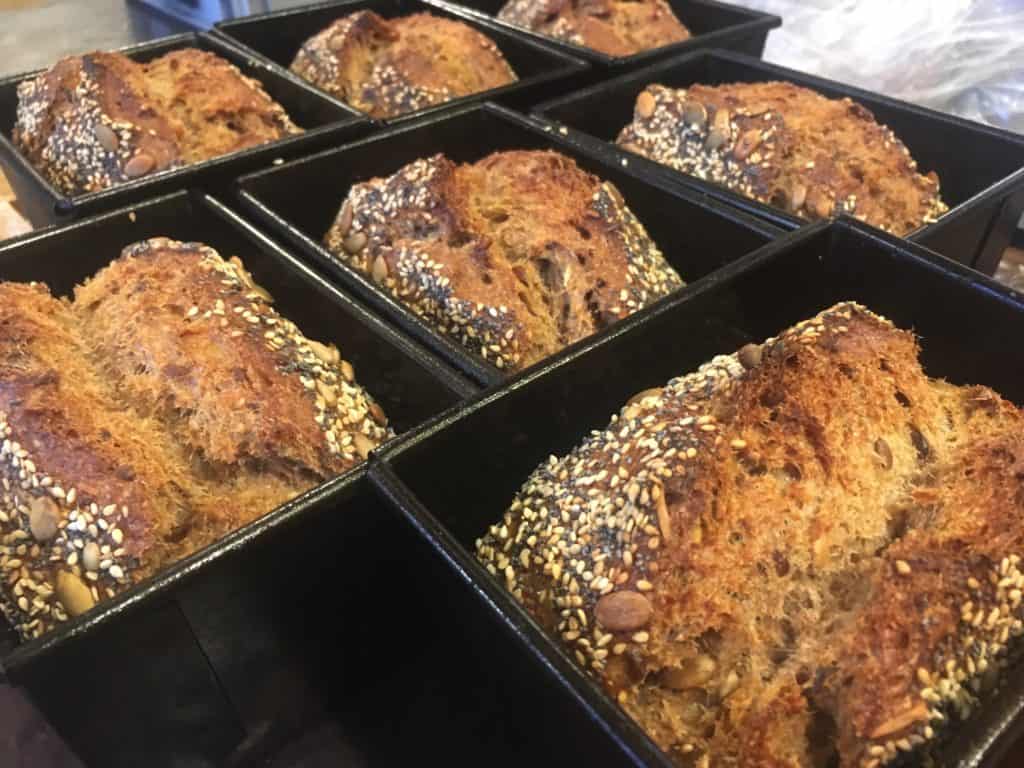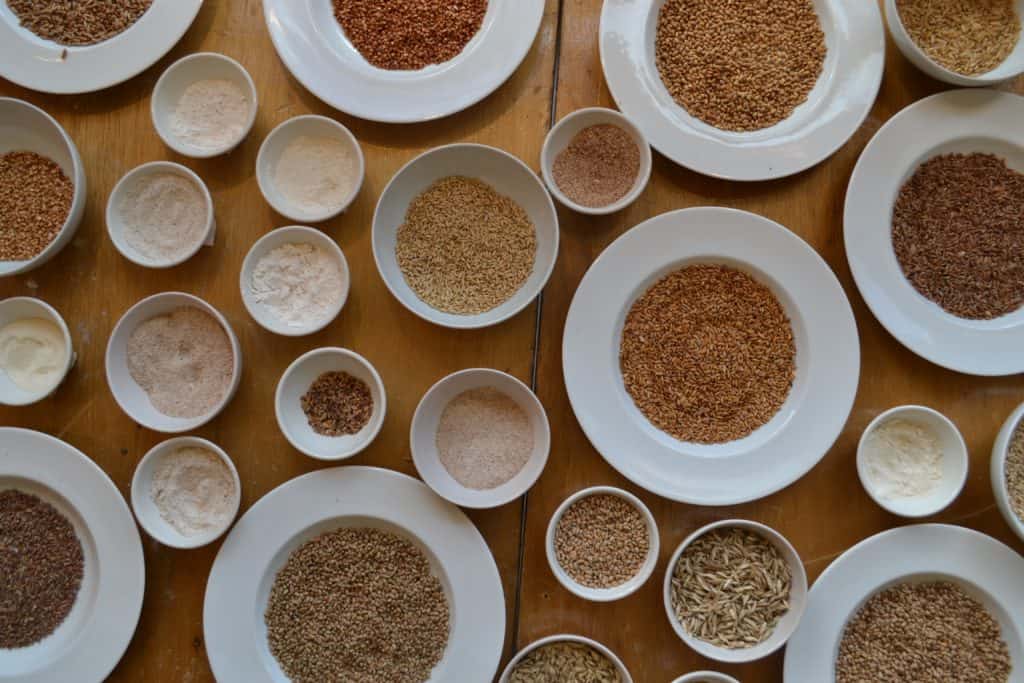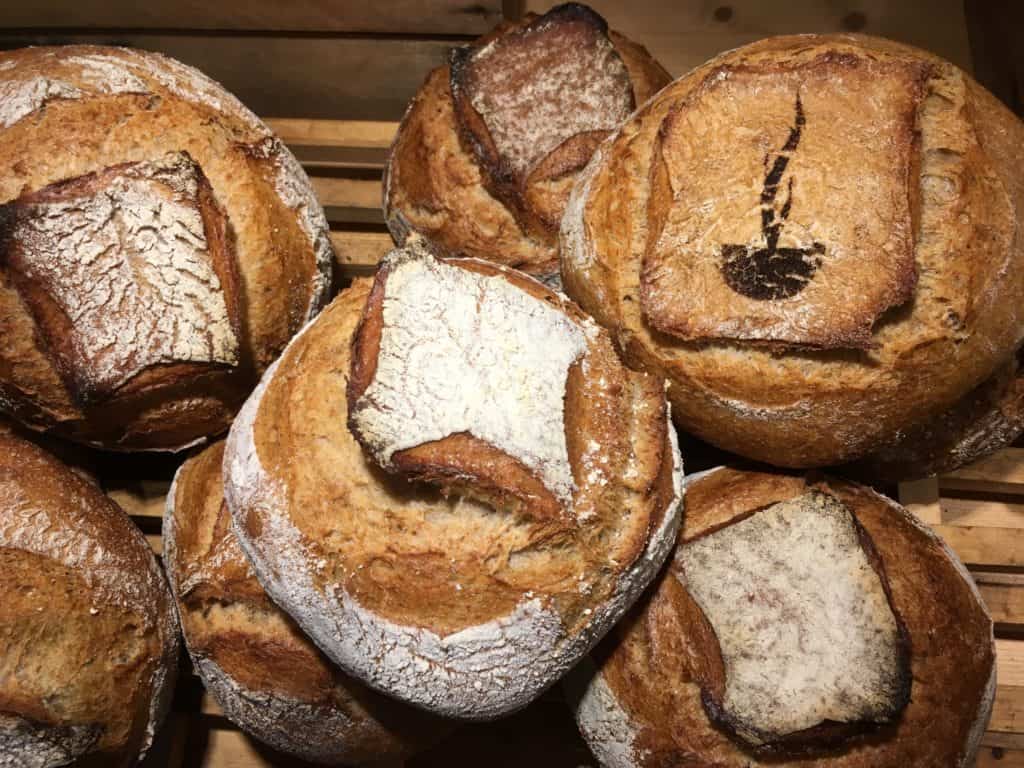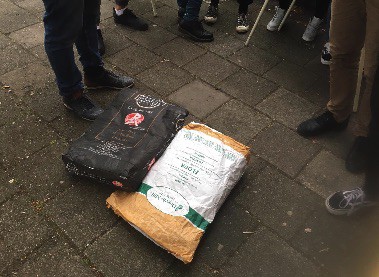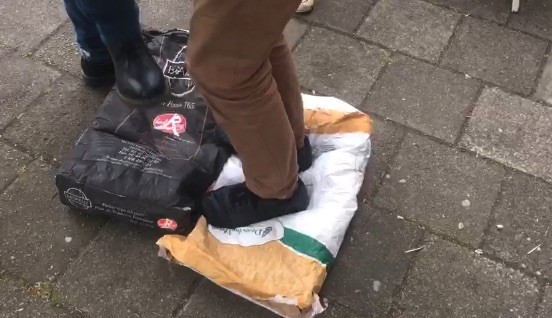[Only in English]
Old bread has value, some may even say its gold. Beside it’s nutritious ingredients (starch, protein, minerals, fibres, vitamins) it is a substance in which a lot of time and energy has been invested, i.e. fermenting, shaping and baking. During the fermentation stage new flavours emerged and subsequently the heat invested in the bread during baking gelatinized the starch (for easier digestion) and promoted new chemical structures, such as the caramelisation of sugars and formation of sugar-amino acids compounds in the crust (maillard reaction). These are in other words, nutrients, textures and flavours that have value.
Reviving an old custom
Reports indicate that bread is the most wasted food in the Netherlands. According to an article by NRC Handelsblad (10 May 2019), about 25% of all bread in the Netherlands ends up as waste.
Values, eventually pave the way for norms…….
Baking Lab Amsterdam explores ways to transform food waste into meaningful food applications. Among one of these applications is the use of old bread, as an ingredient to improve the flavour and quality of new breads. The procedure in itself is not new. It is rather an old custom, which got forgotten due to the abundance and relative cheap price of flour, consumer convenience and large scale industrial baking. This waste trend is worsened by the loss of artisanal baking skills and the dependence of small bakers on the suppliers of raw materials, whose economic interest is to sell as many ingredients as possible. Read more about our mission in this press release
Baking Lab Amsterdam explores ways to transform food waste into meaningful food applications. Among one of these applications is the use of old bread, as an ingredient to improve the flavour and quality of new breads. The procedure in itself is not new. It is rather an old custom, which got forgotten due to the abundance and relative cheap price of flour, consumer convenience and large scale industrial baking. This waste trend is worsened by the loss of artisanal baking skills and the dependence of small bakers on the suppliers of raw materials, whose economic interest is to sell as many ingredients as possible. Read more about our mission in this press release.
Learn more in our workshops.
During our workshops we share more information about these methods. Check our workshop calendar for upcoming events.
Droste bread.
Using old bread as an ingredient for new bread, over and over again, bends the “linear” process of baking to become a more circular one. Using old bread to make new bread may be symbolised by the so called Droste effect… a picture of a Dutch cocoa powder brand in which the picture of woman recursively appears within itself.
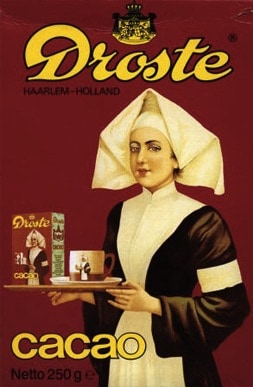
Bread Staling
Bread becomes old due to phenomenon known as staling, a process in which water bound to the starch granules evaporates from the bread causing the starch to degelatinizing and become hard again. Staling is not, as is commonly believed, simply a drying-out process due to evaporation. Bread will stale even in a moist environment, and stales most rapidly at temperatures just above freezing. So don’t keep your bread in the fridge, it will become stale more quickly.
How to use old bread as a bread improver?
First you will need to find a convenient way to dry your leftover bread to preserve it and use it later at your convenience. Bakers using baking stones can use the slow decrease in heat of their oven to dry the bread after baking and give the leftover energy a meaningful purpose.
How much old bread goes into your new bread?
You will need to explore what works best for you, but you will probably not want to go above 5% of your total flour. The gluten of old bread gluten is more or less destroyed and it also holds (binds) much more water than regular flour. This water is not or much less available to mix your basic bread flour. A too dry mix will increase the chance of having lumps if you are mixing it by hand. It’s all about finding the right balance again. You can make a cooking piece with regular bread flour too, bringing a small portion of your flour mixed with water (1:4) to 65 °C. At this temperature the starch swell and gelatinise, but the gluten may still be functional. In these later cases you see recipes calling for portions of cooked piece (portion) up to 10%. Obviously you will need to correct your final bread formula for the amount of water, salt and flour (old bread) that you incorporate in your recipe.
How to incorporate your old bread crumbs & boiling water?
You need to break your bread into smaller “even” crumbs. Making crumbs may be a “challenge”, since you do not want to under- and over- gelatinize the starch in the old bread. In the first case you may end up with hard lumps in the dough, while in the later case the bread might become sticky or have a cakey crum. Once you have found the right balance and have managed to incorporate the old bread in your new dough, the crum of your new bread will stay moist for a considerable longer time and therefore improve the quality of your new bread without any unnatural food additives!
Watch our creative way of making crumbs: Play video dancing & crumbs
What ratio of boiled water is required to hydrate and gelatinize the old bread?
This depends on the size of your crumbs and the time you have for these crumbs to absorb the water and become soft again. A mixture of crumbs (not bigger than a few cm), treated with boiling water and stored in a closed pot to prevent loss of heat and vapour should be left to cool for a few hours and do the job. In that case a ratio 1 x old bread to 3 x boiling water should be fine, 1: 4 if the bread crumbs are very big. Remember, time is often your best friend when it comes to baking artisan bread, let the bread and water sit for hours to absorb the water and cool down.
What can we learn from Bulgur ?
Bulgur is a cereal food made from the cracked partially boiled groats of several different wheat species, most often from durum wheat. It originates in Middle Eastern cuisine. Instead of old bread you can also use bulgur to improve the quality of your bread. Bulgur comes in different sizes, the smaller size groats will absorb the boiling water within a few minutes (less then 10 min), the bigger sized groats will need more time to swell. Incorporating old bread will add flavours to your recipe, bulgur is a more natural ingredient that will improve the moisture retention without affection the general flavours of your recipe. You can make your own bulgur by cooking grains and drying them afterwards.
Bulgur and gelatinization of starch
From: Determination of the cooking degree for bulgur production using amylose/iodine, centre cutting and light scattering methods. Food Control Volume 17, Issue 5, May 2006, Pages 331-335
The optimum cooking time was determined as 40 min for each method (100% gelatinization, Fig. 4 ). After 40 min, the excessive cooking caused the significant deformation on the wheat kernels. At 120 min of the cooking operation, all wheat kernels completely deformed.
Learn more in our workshops.
During our workshops we share more information about these methods. Check our calendar for upcoming events.

